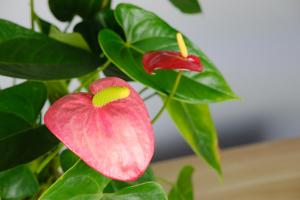How to Make Plaster Plant Pots
If you are looking for a fun and easy DIY project to add a bit of personality to your indoor or outdoor plants, making plaster plant pots might be just what you need! With a few simple materials and some creativity, you can create unique, handcrafted pots to showcase your beloved greenery. Here’s how to get started.
Gather Your Materials
To make plaster plant pots, you will need:
Plaster of Paris
Water
A mixing bowl
A silicone mold (you can purchase these or make your own from a plastic container)
An old spoon or spatula to stir the plaster
A variety of decorative pieces, such as beads, shells, or stones
A drill or screwdriver to create drainage holes
Mixing the Plaster
Once you have all of your materials gathered, it’s time to mix the plaster. Start by pouring the plaster powder into a mixing bowl, then slowly add water until the consistency is thick but pourable. Stir the mixture slowly and consistently, avoiding creating any air bubbles.
Add Your Decorations
While the plaster is still wet, you can add decorative pieces such as beads, shells, or stones. Place them on the mold in the desired pattern or randomly sprinkle them in for a more organic look. Gently press them into the plaster to ensure they stick.
Create Drainage Holes
To avoid overwatering your plants, it’s important to create drainage holes in your plaster pots. You can do this with a drill or screwdriver, carefully creating a small hole in the bottom of the pot. Alternatively, you can also create small indentations in the bottom of the mold when pouring in the plaster to create a built-in drainage system.
Let it Set
Once you have finished decorating, let the plaster set in the mold for several hours, or according to the instructions on the plaster package. It’s essential to let it completely dry and harden before removing the mold to avoid cracking or breaking the pot.
Pop it Out
Once the plaster has fully dried and hardened, carefully remove the mold. You may need to gently guide the pot out of the mold by pushing on the bottom or running a craft knife along the edges. Once it is out of the mold, you can sand any rough edges and add any final touches, such as paint or varnish.
Final Thoughts
Making plaster plant pots is a fun and easy way to add a personal touch to your greenery. With a little creativity and a few basic materials, you can create beautiful, unique pots that will showcase your plants in style. So, get creative and have fun!

 how many times do yo...
how many times do yo... how many planted tre...
how many planted tre... how many pine trees ...
how many pine trees ... how many pecan trees...
how many pecan trees... how many plants comp...
how many plants comp... how many plants can ...
how many plants can ... how many plants and ...
how many plants and ... how many pepper plan...
how many pepper plan...





























